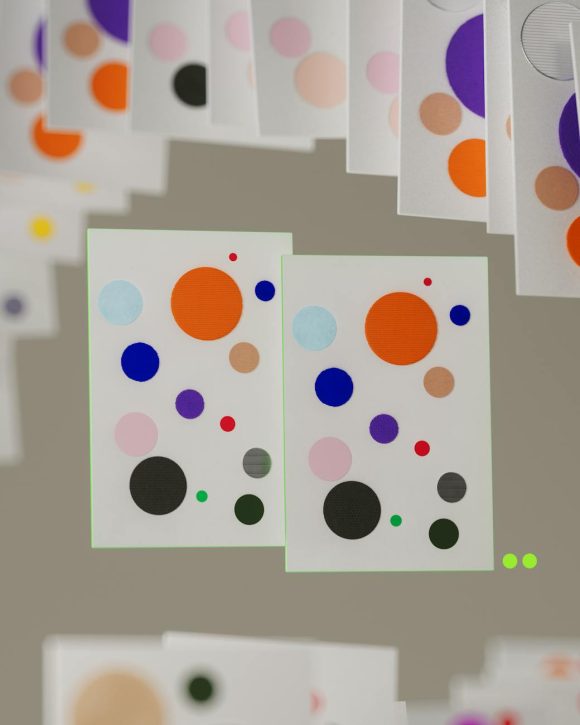Understanding Graph Representation
Graphs are fundamental structures in mathematics and computer science, used to model pairwise relationships. Understanding how to represent graphs is essential for working with various graph theory algorithms explained in this article.
Types of Graph Representations
You can represent a graph primarily in two ways: adjacency matrix and adjacency list. Each representation has its advantages and disadvantages, which can affect your algorithm’s efficiency and implementation.
| Representation Type | Advantages | Disadvantages |
|---|---|---|
| Adjacency Matrix | Simple to implement | Space inefficient for sparse graphs |
| Easy to check if there’s an edge between two vertices | Doesn’t scale well with many vertices and fewer edges | |
| Adjacency List | More space-efficient for sparse graphs | More complex to implement |
| Efficient for most graphs | Checking for an edge requires traversing the list |
Adjacency Matrix vs. Adjacency List
Adjacency Matrix
An adjacency matrix is a 2D array of booleans or numbers that indicates whether pairs of vertices are adjacent. In weighted graphs, this matrix can contain edge weights instead of boolean values (GeeksforGeeks). It’s particularly useful for dense graphs where the number of edges is close to the maximum possible.
Example of a simple adjacency matrix:
| A | B | C | |
|---|---|---|---|
| A | 0 | 1 | 1 |
| B | 1 | 0 | 0 |
| C | 1 | 0 | 0 |
In this example, vertices A, B, and C are represented, with 1 indicating an edge between A and B, and A and C.
Adjacency List
An adjacency list consists of an array of lists. Each list corresponds to a vertex and contains its adjacent vertices. This representation is more space-efficient, especially for graphs with many vertices but few edges (GeeksforGeeks).
Example of an adjacency list:
- A: B, C
- B: A
- C: A
In this case, vertex A is connected to vertices B and C, while B and C each only list their connected vertices.
Choosing the right representation is crucial for implementing graph data structure implementation efficiently, and it can significantly influence the performance of the algorithms you use. For further exploration, consider looking into graph neural networks algorithms and their implementation challenges.
Fundamentals of Graph Traversal
Understanding how to traverse graphs is essential for implementing various graph algorithms. Two of the most fundamental algorithms used for this purpose are Breadth-First Search (BFS) and Depth-First Search (DFS). You will find that each has unique characteristics and use cases that make them suitable for different scenarios.
Breadth-First Search (BFS) Algorithm
The Breadth-First Search (BFS) algorithm explores a graph in a breadth-ward motion, using a queue to select the next vertex to explore when a dead end occurs. This node-based method is particularly effective for finding the shortest path between two nodes in a graph (Tutorialspoint).
In BFS, the vertices are categorized into visited and unvisited. You start from a selected node and visit all of its adjacent nodes before moving on to the next level. This ensures that all previously unknown neighboring nodes are explored before moving deeper into the graph.
Here’s a summary of the BFS characteristics:
| Feature | Breadth-First Search (BFS) |
|---|---|
| Traversal Method | Node-based (FIFO) |
| Data Structure | Queue |
| Main Use | Finding shortest paths |
| Memory Complexity | Higher compared to DFS |
Depth-First Search (DFS) Algorithm
On the other hand, the Depth-First Search (DFS) algorithm traverses a graph by following a depth-ward motion, using a stack-based approach. It is known for its efficiency and is often called Edge Based Traversal because it explores nodes along the path or edge (Tutorialspoint).
In DFS, you start at a given node and continue moving deeper into the graph until there are no more nodes to visit along the current path. If a dead end is reached, it backtracks to explore other nodes. This recursive approach is faster than BFS, requires less memory, and is best suited for decision trees.
Here’s a summary of the DFS characteristics:
| Feature | Depth-First Search (DFS) |
|---|---|
| Traversal Method | Depth-ward (LIFO) |
| Data Structure | Stack |
| Main Use | Decision trees and pathfinding |
| Memory Complexity | Lower compared to BFS |
Both BFS and DFS serve as foundational algorithms for traversing or searching graphs and trees. They are not only important in theory but also have practical applications in areas like applications of graph theory in real life. By grasping these algorithms, you can better understand how to implement and work with more complex graph theory algorithms explained in this article. Don’t forget to check out our upcoming sections for code examples and further practical applications of these algorithms.
Advanced Graph Algorithms
In this section, we will explore two prominent graph theory algorithms: Dijkstra’s Algorithm and the A* Algorithm. Both play essential roles in navigating graphs effectively and are widely used in various applications.
Dijkstra’s Algorithm Explained
Dijkstra’s Algorithm is a popular method for finding the shortest paths between nodes in a graph. You can trace its origins back to 1959 when Dr. Edsger W. Dijkstra designed this handy algorithm while pondering a journey to Groningen from Rotterdam during a coffee break in Amsterdam (freeCodeCamp).
The algorithm works by starting from a source node and progressively exploring the shortest path to the destination node. Each time it discovers a new node, it calculates the shortest path to that node using the currently known distances. It’s particularly important to note that Dijkstra’s Algorithm is applicable in weighted graphs, as long as they do not contain negative edges.
The following table outlines the steps involved in Dijkstra’s Algorithm:
| Step | Action |
|---|---|
| 1 | Initialize distances from the source node to all other nodes as infinite, except the source node itself, which is set to zero. |
| 2 | Create a set to track vertices included in the Shortest Path Tree (SPT). |
| 3 | While there are unvisited nodes, select the node with the smallest distance. |
| 4 | For each neighbor of the selected node, calculate the distance through the selected node. If this distance is less than the currently known distance, update it. |
| 5 | Repeat until all nodes are visited. |
Dijkstra’s Algorithm utilizes a boolean array sptSet[] to track the vertices included in the SPT and an array dist[] to maintain shortest distance values for all vertices during computation (GeeksforGeeks).
A* Algorithm and Its Applications
The A* Algorithm is another widely-used algorithm for pathfinding in graphs. It builds upon Dijkstra’s Algorithm by introducing a heuristic approach. A* evaluates the total cost of a path by combining the cost to reach the node (g(n)) and an estimated cost to reach the goal from that node (h(n)). This makes A* particularly effective for scenarios requiring efficient pathfinding, such as in gaming, robotics, and transportation networks.
You can think of A* like a GPS that not only considers the distance to your destination but also smartly factors in other attributes such as traffic, road conditions, and routes. This leads to highly efficient pathfinding, which is what makes A* stand out.
Applications of the A* Algorithm are abundant. Here are a few key use cases:
| Application | Description |
|---|---|
| Video Games | A* helps navigate characters or objects through complex environments. |
| GPS Navigation | It provides optimal routes based on real-time data and conditions. |
| Robotics | A* is used in mobile robot navigation for effective movement and obstacle avoidance. |
| Network Routing | The algorithm optimizes data packet routing across interconnected networks. |
Both Dijkstra’s and A* algorithms are integral to understanding how to implement effective graph theory algorithms explained. They not only highlight the principles of efficient pathfinding but also serve as valuable tools across various fields, from computing to everyday applications.
Practical Applications of Graph Theory
Real-World Implementations
Graph theory algorithms have numerous real-world implementations that help solve complex problems in various domains. Here are a few notable examples:
| Application | Description |
|---|---|
| Airline Scheduling | Directed graphs represent flights and serviced cities, where edges signify crew requirements. The minimum flow calculation helps airlines determine the least number of crew members needed for all flights. Xomnia |
| Shortest Path Navigation | Algorithms like Dijkstra’s are utilized in GPS systems to compute the shortest routes between a current location and a destination. This application lays the groundwork for efficient travel and logistics. freeCodeCamp |
| Search Engine Algorithms | Google’s PageRank uses graph models where vertices are websites and edges are hyperlinks. This system ranks sites based on their interconnectedness, delivering relevant results in search queries. Xomnia |
| Sudoku Puzzles | Graph theory can simplify solving Sudoku puzzles by representing the grid as a graph where certain constraints create edges, aiding in finding valid solutions efficiently. Xomnia |
These implementations showcase the versatility of graph theory in addressing real-world challenges effectively.
Use Cases in Various Industries
Different industries leverage graph theory algorithms to enhance operations and resolve issues. Here are some noteworthy applications across various sectors:
| Industry | Use Case |
|---|---|
| Transportation and Logistics | Algorithms help optimize delivery routes and minimize transportation costs by analyzing networks of routes and locations. |
| Social Media | Community detection algorithms identify user groups based on interactions, improving targeted marketing strategies and user engagement. |
| Telecommunications | In network design, graphs visualize the setup and maintenance of connections between nodes, facilitating efficient service delivery. |
| Healthcare | Graph algorithms are used to illustrate relationships between patients, diseases, and treatments to enhance patient care and disease management. |
| Finance | Fraud detection systems analyze transaction graphs, spotting unusual patterns and connections that may indicate fraudulent activity. |
The application of graph theory extends beyond basic algorithm implementation; it fundamentally improves methodologies in distinct industries. For a deeper understanding and specific code examples, refer to our articles on graph theory code examples and graph theory practical applications. Additionally, if you’re interested in exploring graph convolutional neural networks and their connection to deep learning, check out our guide on deep learning on graphs.





